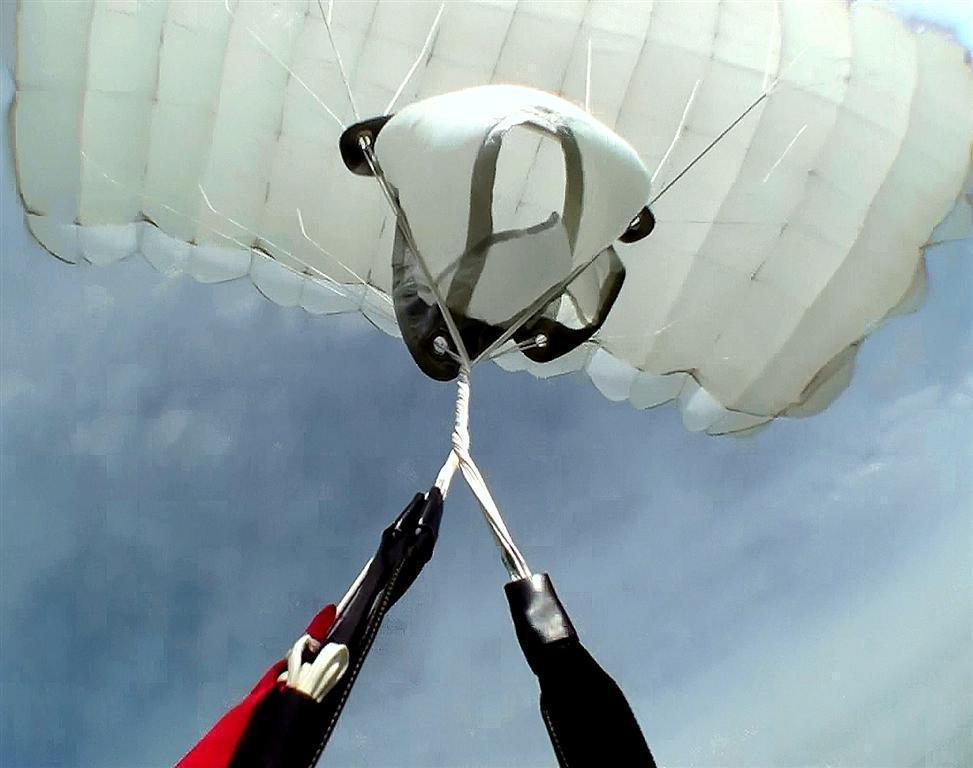Leaderboard
-
in Posts
- All areas
- Adverts
- Advert Questions
- Advert Reviews
- Videos
- Video Comments
- Blog Entries
- Blog Comments
- Images
- Image Comments
- Image Reviews
- Albums
- Album Comments
- Album Reviews
- Files
- File Comments
- File Reviews
- Dropzones
- Dropzone Comments
- Dropzone Reviews
- Gear
- Gear Comments
- Gear Reviews
- Articles
- Article Comments
- Article Reviews
- Fatalities
- Fatality Comments
- Fatality Reviews
- Stolen items
- Stolen item Comments
- Stolen item Reviews
- Records
- Record Comments
- Record Reviews
- Help Files
- Help File Comments
- Help File Reviews
- Events
- Event Comments
- Event Reviews
- Posts
- Status Updates
- Status Replies
-
Custom Date
-
All time
January 20 2016 - April 25 2024
-
Year
April 25 2023 - April 25 2024
-
Month
March 25 2024 - April 25 2024
-
Week
April 18 2024 - April 25 2024
-
Today
April 25 2024
-
Custom Date
05/27/2021 - 05/27/2021
-
All time
Popular Content
Showing content with the highest reputation on 05/27/2021 in Posts
-
3 pointsIt's a sign of how moronic the man is that I had to check quickly if that was a satirical site.
-
2 pointsI still have my 1983 Warp 3 by National. While it is a really poor design, there is nothing about the container condition itself that makes it unairworthy. It probably had 5-600 jumps on it when I stopped jumping it. I packed it a number of times during my rigger training in 1997. The canopies that are currently in it however are a whole other story!
-
1 pointI have 4X5000W LFP batteries on board. They are 2 years old. The new ones have been out for 6 months and are 5500W. It's happening.
-
1 pointI know you didn’t ask this, but, I highly recommend you reconsider using a 9-cell for wingsuit jumps. They are fine when everything goes right and not fine when everything goes wrong. If you’re going to buy a new canopy, might as well get the right tool for the job.
-
1 pointLFP cells have yet another advantage over other cathode chemistries: much higher charge/discharge rate. With some chargers reaching 250kW or more, sub 10-minute charges become more realistic. So if they do solve the issue of lower energy density, LFP is a sure winner. For grid-scale batteries I think they're already taking over.
-
1 pointHi Bill, OK, you got me to do some homework. Here in Oregon I have been reading a fair amount, over the last 4 yrs or so, about the people leaving the Republican party. Usually, they leave & become independents, as I am. So, I did some looking. From the Oregon Sec of State's office I found that of April 2021, we had almost 3 million registered voters. Of those, 35% are D's, 25% are R's, and the rest are 'other,' 39%. The 'lost' 1% are simply how the numbers came up. Voter Registration Comparison by County April 2021 (oregon.gov) Page 2 of this link is where I got my numbers. I expect to see this trend continuing throughout the country. Jerry Baumchen
-
1 pointMeanwhile, to get back on topic: LiFePO4 is lithium-ion's dimwitted cousin. It's heavier, lower energy density, and doesn't work well when it's very cold out. However, it is much cheaper and easier to make; like the name suggests, all you need is lithium, iron and phosphates (and often aluminum/copper for the electrodes.) And it lasts a long time - 5000 cycles or so. From Electrek: "In October 2020, Tesla started producing the Model 3 Standard Range Plus out of Gigafactory Shanghai with LFP battery cells. The move was significant because Tesla also started exporting this new version of the Model 3 outside of China for the first time." https://electrek.co/2021/02/26/elon-musk-tesla-shifting-more-electric-cars-lfp-batteries-nickel-supply-concerns/ The LiFePO4 car has a 250 mile advertised range, and an effective (observed) range of about 200 miles in cool climates. That is still way better than the first EV I got - a Leaf with a ~70 mile range. So as battery manufacturing ramps up, there will be a second cheaper option that EV manufacturers can fall back on. And of course LiFePO4 is improving as well.
-
1 pointBasically forever. But it will go out of style and become obsolete over the years. Don't keep it if you think your layoff will be more than 10 years or so.
-
1 pointReally? You, of all people are going to criticize him for poor typing style and hard to read composition?
-
1 point
-
1 pointA friend still jumps a pair of Sweethogs... and they look factory fresh. (one was even retro'ed for a Cypres by SSK themselves) I'm thinking of putting my 1991 Vector II back in the air. On the other hand, I've known of some pilot rigs (same materials) that were forcibly retired by the factory after 2 years of use. ETA - these were a group of specific rigs, grounded due to condition (prolonged sun exposure) during inspection, not a categoric grounding of a make/model for age, etc... Example given to show how user treatment of the gear plays a critical role in how long they last. How old a rig I will inspect/pack for others, is a completely different question. JW
-
1 point
-
1 pointYou may find these interesting. How Long Does it Take to Charge an Electric Vehicle? What's an electric car really like to live with? Pros and cons revealed Electric cars: EV buying advice and information
-
1 pointBig vote for SkyHigh at Peterlee, it isnt far from you at all and they have an amazing AFF school. Make a couplenof weeks vacation there, accomodation via AirBnB or in their bunk house.
-
1 pointWhich is the intention. As cartoonishly unqualified as Cyber Ninjas are - lacking any form of expertise, experience or accreditation - to focus on them misses the point. Cyber Ninjas aren't the problem. The republican state legislature that decided Cyber Ninjas were the best company to further their agenda is the problem, because their agenda is to permanently undermine the offices and processes which safeguard the practice of democracy across the state. The republican legislature want to compel Maricopa to hand over access to the routers which handle all confidential government communication to a company too incompetent to know how to properly search for files on a server. They were forced to back down from a plan to have Cyber Ninjas send contractors to people's residences to quiz them about their votes. The same republican party which in Florida says giving water to people waiting in line all day must be outlawed because it could influence their vote, wants to put Arizona citizens on notice that if they vote for the wrong candidate their details will be given to a private out of state security consulting firm who will send guys to their house. Because that couldn't possibly have an effect. The cynicism of the republican legislature in forging ahead with and giving credence to the sham is terrifyingly Orwellian. In an added Kafkaesque twist the republican election administrators who have made and honour a career in civil service by doing their jobs professionally and competently, and standing firm with the truth are the ones being targeted. Republican legislatures are attempting to either replace them with party apparatchiks, make their offices subject to overrule by the legislature, or make them personally liable to felony convictions and huge sentences if they fail to do their jobs perfectly every time with no mistakes. A tactic transparently designed to open them up to threats and coersion from the party bosses the next time they stand in the way of an election being stolen. I keep seeing people saying that the republican shenanigans in lying about the Capitol riot and opposing the Jan 6th commission are because they to sweep it under the rug and make it go away. I disagree. I think they know all their bullshit just keeps Jan 6th in the news and they fucking love it. The longer people keep talking about Jan 6th as 'that time' republicans tried to steal a presidential election the longer it distracts them from noticing that everything republican lawmaker across the country have done since then has been to weaken the laws guarding free and fair elections and cripple the ability of non-partisan offices to safeguard the results. Since January the republican assault on democracy in the USA has been stronger, more coordinated and more successful than anything they did while Trump was still president and they show know signs of stopping.
-
1 pointSame story, but the title is just sooo good! LOL! Giuliani’s long quest to put himself in legal jeopardy appears to have paid off
-
1 pointI used to race motorcycles, my ambition out weighed my ability and I crashed - a lot. I got injured - a lot. In one race season I had three spells in hospital. But I loved to race motorcycles so I kept getting on the start line, and kept crashing and getting hurt. My final race ended in much the same way, I woke up in hospital with broken bones and bleeding on the brain, they fixed me but I decided enough was enough, my family, and my body, had been through enough, I retired. But I love to ride motorcycles so I bought a Harley to just pootle around on. Five months after I retired from racing I was riding along a nice country road around 50mph when a startled pheasant flew out of the hedgerow straight into my face. I woke up as the air ambulance landed. I was more banged up pooling along than I was in any of my racing crashes, I was very, very lucky to survive. That accident taught me a very important lesson - life is short, you can wrap yourself in cotton wool but if it is your time it is your time, if it is not it is not. Every grave stone has two dates on it "born" & "died". Between those dates is a "dash". Life is not about the "dates" but about the "dash". We are all born, we all die the real important thing is whether you "live your dash". Fill your dash with things that delight you, fill it so full that your eulogy takes a couolenof hours and your funeral is full of people with stories of how you lived.
-
1 pointWe recently realized that despite our hundreds of articles on the website, we're really lacking on anything comprehensive on swooping. If you or someone you know are interesting in writing something for the website, please drop me a DM and we can discuss further. We're going to be looking for something that covers everything from the fundamentals through to the risks, the competitive scene etc.
-
1 pointDave, I'm actually going to disagree with you there. Here are my thoughts: For rotations 450 and under it's best to use double fronts to start the approach. It ensures a higher likelyhood of hitting your max speed while still rotating by giving you a higher initial speed prior to introducing rotation since you need every bit of the 450 to hit peak speeds. For turns 630 and onwards, since the duration of rotation is longer, double fronts are no longer needed as you're ensured to reach max speed with rotation to spare. Personally I'm entirely out of my fronts about 70% through my turn as I can no longer hold them down (insert girly man jokes here). In fact I release them slightly earlier than I can hold them down to ensure the smoothest release possible vs them blasting out of my hands and wasting energy that I've already built in sudden wing deformations. Blues, Ian Performance Designs Factory Team
-
1 pointI'm sorry I haven't explained my thoughts well enough, I'll try to give you a better explanation. The point is that you can hold a diving turn with only harness input for a large degree turn, but you still won't achieve the same amount of speed and power potential for the canopy in the same amount of turn by using harness and riser input. By using the front risers you're able to get further out from under the canopy to produce a harder dive and more power through the recovery/roll out from your body coming back under the canopy. --"When I die, may I be surrounded by scattered chrome and burning gasoline."
-
1 pointWhen I started getting interested in "hook turns" back in the early 90's, everyone was doing toggle turns. Not much advice. "Just pull the toggle all the way down and make sure you are higher than normal," was about the extent of it. I'd fly a normal pattern and gradually got more aggressive on the last 90 turn. Gradually, I learned to do it higher and as my confidence built, the 90's slowly grew into 180 degree turns. No one around my DZ was talking about "sight picture" yet. I'm not sure when or where that was coined. Using my eyes and experience along with the wrist alti led to more consistent swoops. Along the way, I lost quite a bit of skin and "bounced" several times. Just dumb luck that I never broke anything......or worse. As I became more proficient, I began to experiment with front risers and began reading about more experienced jumpers recommending them as safer and more efficient. Not everyone was convinced. I took a step back when learning front riser approaches. I went a route similar to the one described by billvon above, flying a "normal" pattern and using double fronts on final. I found myself flying the whole pattern lower so that when I finished my 90 onto to final, I could go immediately into fronts and be in the swoop before the riser pressure got to high for me to hold them down. Only when I started doing gradual front riser turns onto final did I realize I needed to start them with more altitude. Cool, no pain this way and was soon doing carving 180's. All the while I was downsizing and going to more HP canopies as they started to gain in popularity, maybe around 1993 or '94. By '97 I was jumping a 136 Jedei at 1.7 and thought it would be cool to move onto 270 degree approaches. There still wasn't much available at that time in trems of advice, mostly "just do what ever you are going to do but do it a lot higher." I decided to experiment way up high. H&P from 10.5 and set up on a heading at a specific altitude. Then I experimented with turns and when the canopy planed out. I was looking for a pattern of how much altitude my canopy would loose in an aggressive 270 degree front riser turn. Then I took that information and used an approach similar to what Rhino describd above. I started out higher than what my tests had shown me and sure enough, I was finishing my 270's too high. Not being patient, I then tried going lower, about 400' as I recall. I found myself having to bail out of turns from that alti. Of course I hadn't given any thought to density altitude. Things were getting better now as far as info. Blade running was catching on and organized swoop meets started to happen. Information was starting to be shared. In 1999, I started to jump the new x-braced canopies starting with an FX. By then 360 and 540 and even some 720 degree appraoches were being used by a growing number of jumpers. In Oct of '99 I made jump number 1201 on my 89 VX and it wasn't long before I wanted to do carving 360 degree approaches, useing rear risers for the surf, and stearing with harness input. Advice from the manufacturers reps still wasn't much more than "whatever you decide to do, make sure you do it real high." Back up to altitude and do some experimenting. It did not take more than a few jumps using my wrist alti to realize that an aggressive, carving 360 front riser approach on this canopy would nead nearly 1000' of altitude. The front riser pressure was so high on that canopy that I learned to set-up in brakes. During slow flight the pressure was fairly light and it much easier to transition to aggressive fronts. What a hodge podge of experimenting, improvising, reading, researching, observing, and talking to others. Today, I advise "experienced" canopy pilots to make a lot of H&Ps up high and learn all of the flight characteristics and ranges of the canopy. Make several jumps just noting how much altitude it looses in 180, 270, and 360 turns. Once that is mastered, start with the straight in front risers and progress slowly up to what ever their goal is. That is a very over-simplified version because there is so much to learn and that really needs to start at jump number 1. alan
-
1 pointI don't think there is any reason to say you shouldn't start learning the dynamics of canopy control that will lead you to swooping at 150 jumps. Now, I'm not saying on the next load go up and rip a hard 360 and hope. I started learning about a year ago at about 100 jumps or so. Reading everything I could get my hands on, getting canopy coaching, listening and learning from experienced canopy pilots, etc. A strong foundation of knowledge is key to success. Couple that with a gradual learning curve and experience and you'll have a good start. Too far, too fast = broken body or death. --"When I die, may I be surrounded by scattered chrome and burning gasoline."
-
Newsletter



.thumb.jpg.4bb795e2eaf21b8b300039a5e1ec7f92.jpg)







